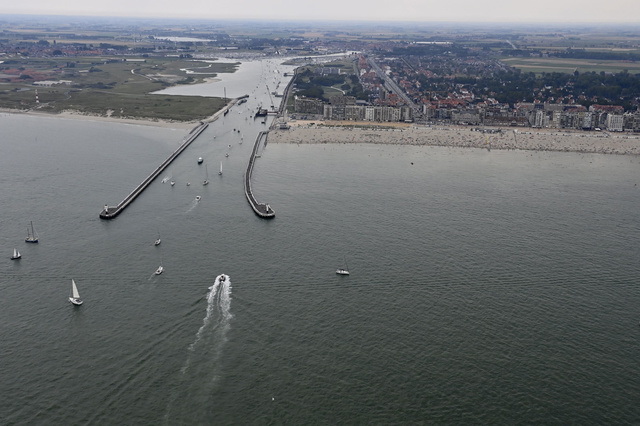In Nieuwpoort, water from the North Sea has been desalinated into drinking water for the first time ever. By 2025, a new factory should produce up to 4 million cubic meters of drinking water annually.
In Nieuwpoort, the water companies Aquaduin, Farys and De Watergroep have set up a pilot project together. Seawater from the fairway is desalinated into drinking water. This makes Flanders the first region on the North Sea to use the sea as a source of drinking water.
The pilot project should culminate in a full-fledged production installation in 2025 that can ultimately turn fresh water, brackish water and seawater into potable water. The factory will have an annual volume of 4 million cubic meters of drinking water, good for the annual consumption of the city of Ostend.
Flanders only has a limited amount of drinking water. Fresh water supplies are particularly limited in West Flanders. The threat of more dry summers – in combination with the extra demand from tourists during the holidays – means that there was a need for new, reliable sources of drinking water.
Today, brackish water is already being converted into drinking water in Flanders. This takes place in Ostend, where Farys converts brackish canal water into tap water.
‘Milestone’
The new desalination plant in Nieuwpoort will go one step further: it will also be possible to desalinate seawater from the fairway. Various technologies are being tested in the pilot installation, whereby a switch can be made from fresh to brackish or salt water depending on the need. ‘But the installation will also be able to run entirely on seawater’, assures Wim Jacobs, innovation manager at Farys. The eventual factory will be able to produce water for 30,000 families annually, but the capacity is expected to double.
In the long run, it cannot be ruled out that even more installations can be built. ‘The sea is an endless source of drinking water. In case of problems, we can even transport drinking water inland,” says Marleen Porto-Carrero, general manager of Farys.
The ultimate aim is to provide Flanders with a sufficient supply of drinking water, even in times of great drought. That says Flemish Minister for the Environment Zuhal Demir (N-VA). “This is a milestone,” said the minister. “I’m really glad we’re preparing, because we don’t want to run out of water.”
In Nieuwpoort, the water companies Aquaduin, Farys and De Watergroep have set up a pilot project together. Seawater from the fairway is desalinated into drinking water. This makes Flanders the first region on the North Sea to use the sea as a source of drinking water. The pilot project should culminate in a full-fledged production installation in 2025 that can ultimately turn fresh water, brackish water and seawater into potable water. The factory will have an annual volume of 4 million cubic meters of drinking water, good for the annual consumption of the city of Ostend. Flanders only has a limited amount of drinking water. Fresh water supplies are particularly limited in West Flanders. The threat of more dry summers – in combination with the extra demand from tourists during the holidays – means that there was a need for new, reliable sources of drinking water. Today, brackish water is already being converted into drinking water in Flanders. This takes place in Ostend, where Farys converts brackish canal water into tap water. The new desalination plant in Nieuwpoort will go one step further: it will also be possible to desalinate seawater from the fairway. Various technologies are being tested in the pilot installation, whereby a switch can be made from fresh to brackish or salt water depending on the need. ‘But the installation will also be able to run entirely on seawater’, assures Wim Jacobs, innovation manager at Farys. The eventual factory will be able to produce water for 30,000 families annually, but the capacity is expected to double. In the long run, it cannot be ruled out that even more installations can be built. ‘The sea is an endless source of drinking water. In case of problems, we can even transport drinking water inland,” says Marleen Porto-Carrero, general manager of Farys. The ultimate aim is to provide Flanders with a sufficient supply of drinking water, even in times of great drought. That says Flemish Minister for the Environment Zuhal Demir (N-VA). “This is a milestone,” said the minister. “I’m really glad we’re preparing, because we don’t want to face running out of water.”
– .


